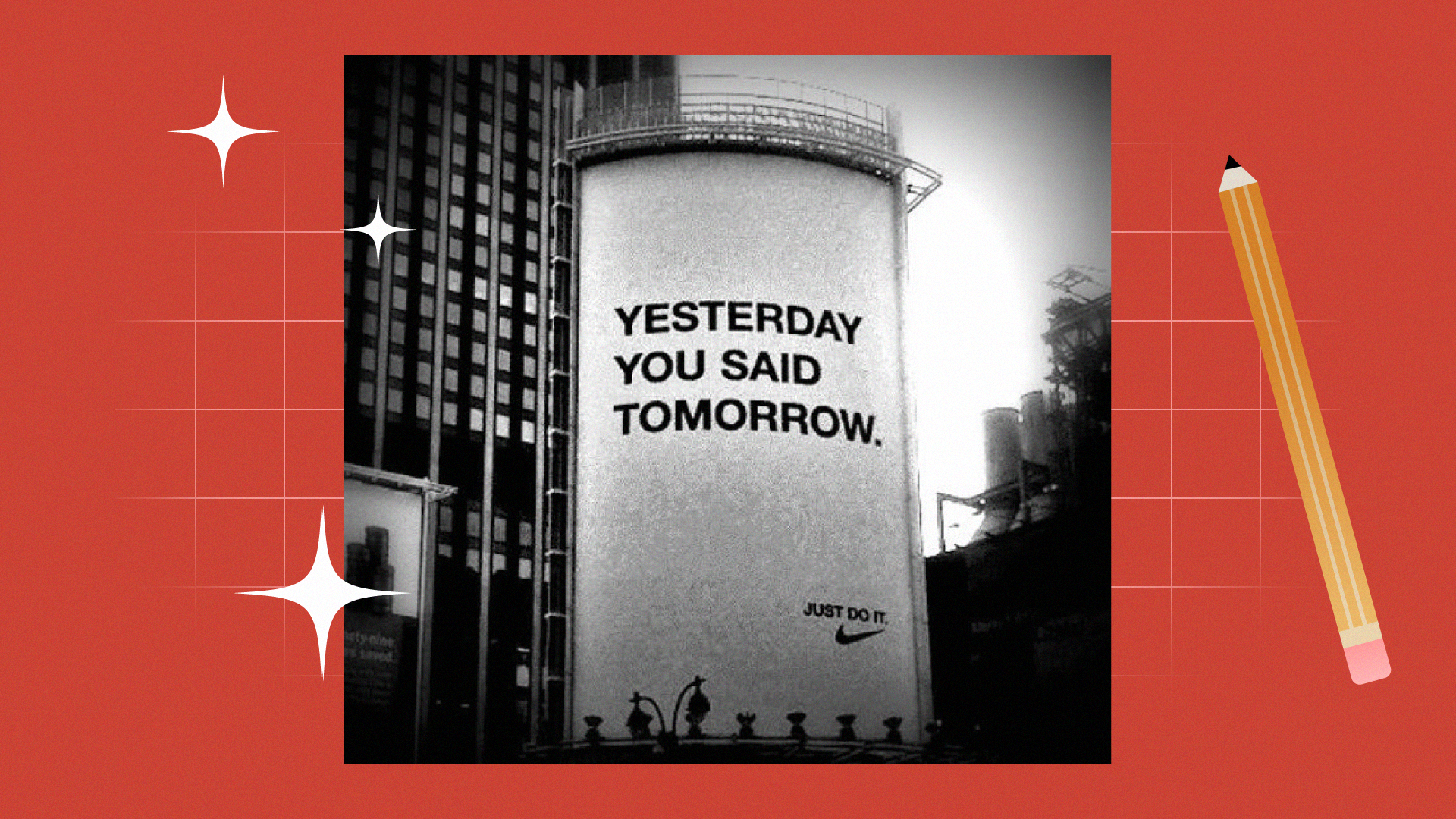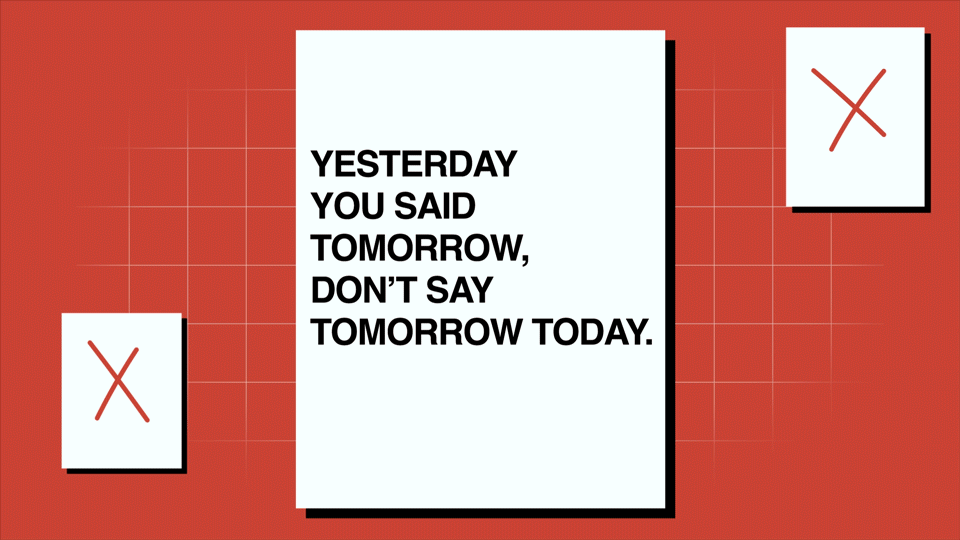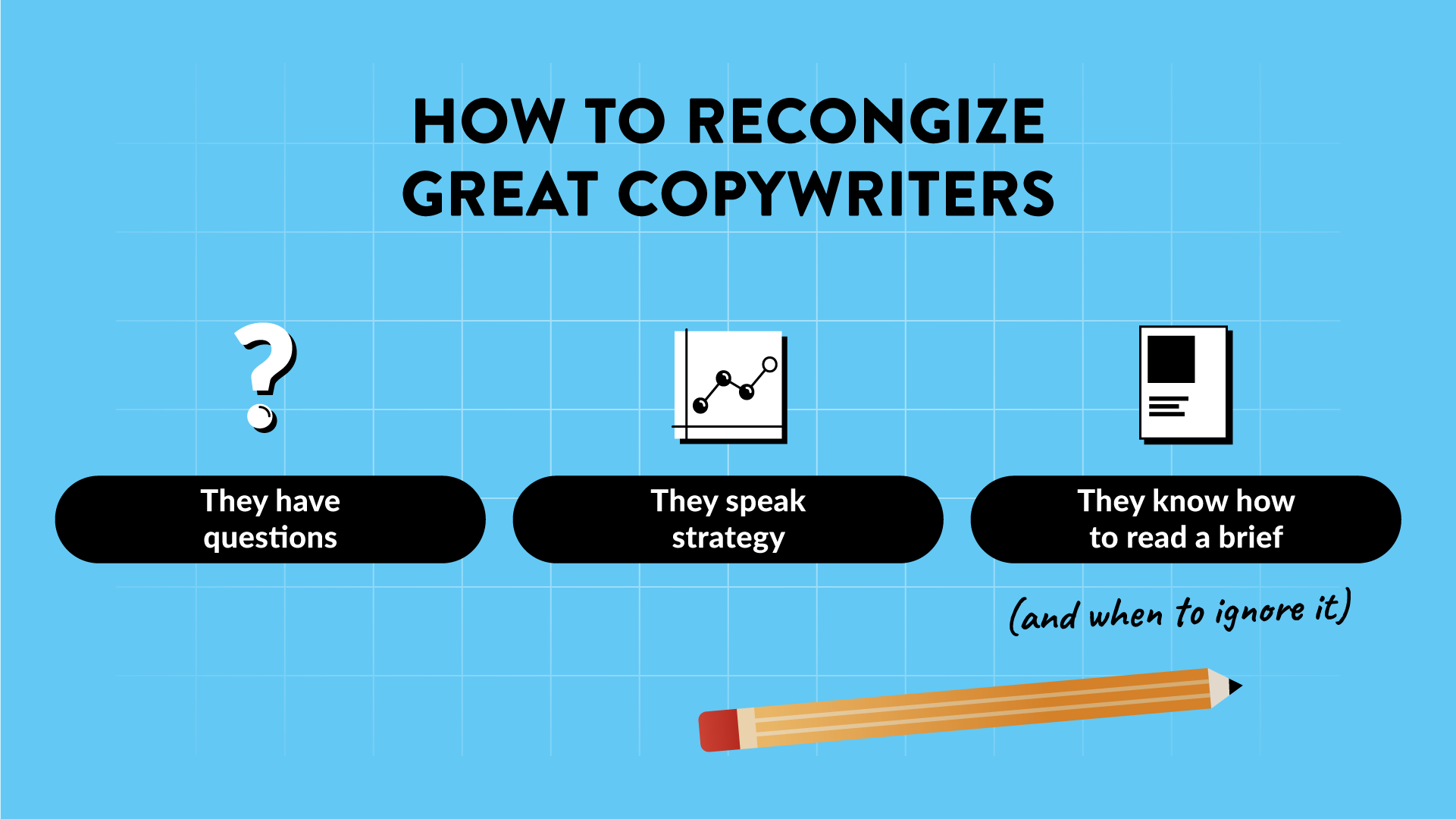In 2008, Nike asked Wieden+Kennedy to produce billboard copy as inspiring as the kicks they once put on the feet of the likes of Michael Jordan. The headline they mustered is a few of the most hard hitting and true-to-brand words you’ll find anywhere.

It takes half a second to sink in, and then it smacks you as a blunt and brilliant reminder that no one’s going to chase your dreams but you. On a deeper level, it accents everything Nike creates and conveys the brand’s persona in just a few words.
How did the writer get there?
I’ve always wondered how many cheesy, emulative lines the writers conceived before landing on this one. So, I asked one of them myself. Today, as executive creative director, Caleb Jensen oversees all the creative output for Nike at Wieden+Kennedy. But back in 2008, he was just a hungry copywriter tossing up ideas and seeing what stuck.
At the time, he and his team had just been approved to go shoot footage with a few of the players on a competitive wheelchair basketball team. They were inspired by the fact that these players had every reason to make excuses, but they didn’t. They kept showing up and improving at the sport they loved. While Caleb and team were drafting copy for this project, Nike called and asked if they had anything they could use for some prominent upcoming billboard space.
“There were probably 100 lines up on the wall,” Jensen said. “One of them read yesterday you said tomorrow, don’t say tomorrow today. My creative director took a marker and went tshht tshht tshht and crossed out the second half. ‘There you go, that’s your line.’”
His team experimented with dozens of flashy designs and layouts for the billboard, before deciding to simply paste the four words in black font over a white background.
“It made the most impact on you with no frills,” he said. “It’s so stark. We reference it a lot now when we’re working on new projects. It’s a great example of the ability to practice restraint.”
I agreed, and asked him what he thinks constitutes great copy and advertising. “You always have to ask how you can get people to care about something,” he said. “And you have to have a POV and take a stance.”

Authenticity > trends
Imagine if each billboard, blog, and social post was this thoughtfully crafted. Today, as brands jump on every trend and channel possible to try and reach customers, the copy looks like homogenous flotsam. In The Rebooting, Brian Morrissey’s newsletter on how to build sustainable media, he argues, “chasing what’s trending on a viral analytics dashboard isn’t a way to build a brand, or be essential to a defined audience.”
He’s right, and when brands chase trends they also tend to lose grip on their brand voice in the process. When your brand voice has become more diluted than a cocktail on an all-inclusive cruise, you need great writers to distill it and start pouring it strong again.
How to recognize great copywriters

They have questions
Don’t look for copywriters who say “I can write that.” Look for copywriters who ask “what do I need to know about your audience, your brand’s POV, and your desired outcome before I write that?” We call this finding the X, the intersection between what an audience cares about and what the client cares about, and that X is where real audience connection happens.
Really great copywriters, the kind that get to the perfect four words on a billboard, do most of the work before the copy hits the page. They’ve studied your audience, channels, and competition. They know where you fit in the market, what message you’re bringing to it, and how it should sound when it gets there — and they’ve confirmed all of this with you.
They speak strategy
A pretty voice is nothing without a strategic punch behind it. When hiring an agency, or anyone to steward your brand’s voice and content, make sure they know what their words are trying to achieve. Great copywriters think in strategy, and often work seamlessly alongside strategists to transform insights into crisp, effective language.
They know how to read a brief (and when to ignore it)
An essential approach for any artist: Learn the rules so you can break them. Fundamentally, great copywriters are adept at scrutinizing a brief and extracting the key messages. This is second nature to them. But great copywriters also recognize when to color outside the lines. Sometimes a brief doesn’t capture what a client wants or allow creatives the freedom to consider what’s possible. Great copywriters have the guts to tell you when an idea isn’t working, and they have the creative chops to conceive something better than you ever asked for.
Can AI do that?
Most writing — especially copywriting — isn’t writing at all. It’s thinking. Directed, absorbed, original thinking. The reason AI chatbots won’t replace copywriters who are worth their weight in salt is because AI can assess, compile, trim, and then write, but it can’t think, think, think, and then write. Great copywriters are chasing something original and original to your brand, which requires a great deal of thinking before any words touch the page.
AI can’t do that
The other day, a guy at my coworking space showed me how quickly he could produce an AI-generated blog post (it was faster than I could pull three swigs of coffee). I won’t deny that objectively, that’s pretty cool. But my question to him, and anyone else creating this type of content, is “does anyone really want to read that?”
AI is built on models that pull from a database. That database may be mind-bendingly vast, but it’s still just a fixed set of words and files that range from cringe Reddit hate posts to cardboard-like corporate listicles adrift in the ether. Even worse, AI spits out a sloppy average of all of that. And if you trust your brand’s voice with a sloppy average of the Internet, this post probably isn’t for you.
It sounds amazing to press a button that instantly checks off a huge item on your to-do list, but, at least for copywriting, AI isn’t there yet, and has caused some horrific incidents when overly trusted before. It only takes a couple of bad blogs or a flimsy email flow for people to stop paying attention to your brand forever. Don’t put content in front of people unless you would hungrily devour it yourself.
AI can do this
But AI isn’t all bad. When a writer is knee-deep in the “thinking, thinking, thinking” phase of copywriting, an AI chatbot can be a useful tool, serving up instant research, inspiration, or ideation. This helps the writer quickly get to the concept, word, or little nugget of information they’re looking for, so they can get right back into deep thinking. The other day, I saved 15 minutes asking Gemini to turn a messy page of a document into organized bullets for a deliverable I was writing. Not all of those bullets made it into the deliverable, but after a few small tweaks, some of them did.
AI isn’t the chef, or even the sous chef. It’s the delivery truck that drops off raw ingredients at your doorstep. You can’t serve those ingredients as is, but they sure can help you whip up something marvelous.
Write it and they will come

What ultimately happens when all the words your brand publishes are carefully aligned? When your content serves both a unique outlook and the interests of your audience? When your channels contribute value and expertise instead of commentary and buzz?
You transform an audience into a community. And unlike audiences and trends and The Hottest Thing On The Internet Right Now, communities prevail. They connect people through shared interests and make them believe in something bigger than themselves. The right words can do that, so choose wisely who you trust to write your brand’s words.
